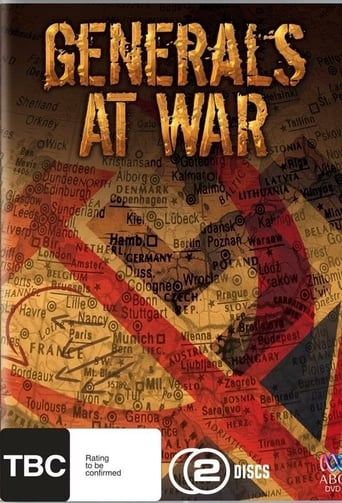

Good concept, poorly executed.
... View MoreThere's a more than satisfactory amount of boom-boom in the movie's trim running time.
... View MoreI enjoyed watching this film and would recommend other to give it a try , (as I am) but this movie, although enjoyable to watch due to the better than average acting fails to add anything new to its storyline that is all too familiar to these types of movies.
... View MoreThe tone of this movie is interesting -- the stakes are both dramatic and high, but it's balanced with a lot of fun, tongue and cheek dialogue.
... View MoreI have read, and watched, a GREAT DEAL about WW2, and I have never seen ANYTHING so historically inaccurate fobbing itself as a documentary EVER.I gave up after the historical errors became so blatant and numerous, that after 2 episodes I couldn't take it.At Midway, it states the Yorktown took 24 hours to be made seaworthy after the battle of the Coral Sea. It was not, more like 48. They claim the combat flight tactic, the Thatch Weave, was never used before Midway. The show presents as an ad hoc tactic, developed at the spur of the moment. It was not. It was a thoroughly rehearsed maneuver designed to maximize the Wildcat's strengths, against a more agile Japanese Zero.In the Battle of the Bulge episode, It says Bradley hated Montgomery deeply. They are mistaking him for Patton. It also says Bradley was reluctant to ask for Patton's help in the Bulge, because it was Bradley's sector. Totally untrue. Bradley was skeptical that Patton could turn 180 degrees, and reach Bastogne in 48 hours. That's a totally different issue.They claim the US bazooka could defeat a Tiger tank, neglecting to mention it would have to be a very lucky shot at very short range.There are just so many historical inaccuracies, that for a someone who has spent as much time as I have watching and reading everything I could get my hands on about WW2 (my Dad was a combat Marine, 4th Marine Division, Kwajalein, Tinian, Saipan, Iwo Jima) it was not watchable.Full of silly demonstrations that if you shoot an explosive pellet into gasoline, it will burn. How informative. Another brilliant demonstration showed how CO2 could put out a candle. Mrs. Parker taught me that in 3rd grade.It's a real disappointment, because new material about the war is getting less and less as memories fade, and veterans pass away
... View MoreLike the others, this episode gives us the hypothetical personal views of the two chief adversaries, in this case the German Rommel and the British Montgomery. Basically, the conflict along the North African coast swung back and forth. Each time one side made an advance of any distance, it left a long supply line behind it.That simple fact, along with others of less importance, led to Rommels' defeat.There were few roads near the coast. South of them was an impassable depression of find sand that couldn't support heavy vehicles. Since the supply lines were restricted to one or two roads they were vulnerable to air attack and the Allies had air superiority.The nearest British supply base was at Alexandria, close by. Rommel depended on shipments of fundamental necessities being shipped from Italy to his two ports, one at Benghazi and the other at Tripoli, far behind the usual front lines.Logistics finally won the day. The episode deals with battles and the persons behind them so it doesn't mention the fact that the Brits had broken most of the Italian naval code. That meant that they knew virtually every ship that would leave Italy with supplies for the Germans. Rommel never relied on the fighting ability of his Italian allies. One of their generals, Ettore Bastico, Rommel referred to as "Bombastico." But the British Ultra was critical. It is estimated that 40% to 60% of Axis supply shipping was located and destroyed due to decrypted information. Rommel ran out of men, water, fuel, armor, and everything else. He was reduced to draining the fuel from some tanks in order to keep others running. By the time of the Second Battle of El Alamen, he was down to 35 tanks against several hundred of the Allies' and his men were vastly outnumbered. And so he lost.He took what he had left and retreated west towards Tripoli, where he intended to withdraw his troops from North Africa, despite Hitler's orders to the contrary. There was evidently enough juice left in the Afrika Korps to give the green American troops a pounding before beginning his evacuation, which was only partly successful. Rommel himself was ill throughout much of the campaign and once hospitalized. His name came up during the investigation of the plot to kill Hitler, which Rommel knew nothing about, and he was forced to take poison.
... View More